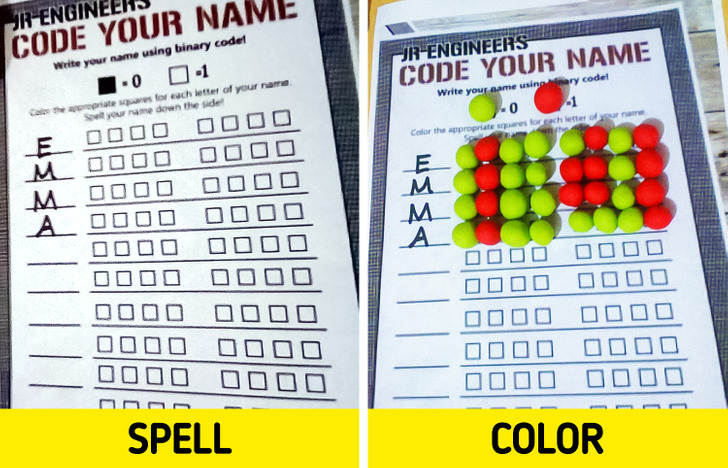What Binary Code Is, and How It Works

Computers use a binary system that is made up of 1s and 0s to communicate information and store the data. Every letter, number, and symbol on the keyboard is represented with 8 digits (byte). Anytime you read an e-book on a website, watch a movie online, or listen to a song on your computer, all come from a pattern of 1s or 0s, billions of times.
5-Minute Crafts has prepared a short guide for you on what a binary code is and how it works.
1. Decimal and binary number systems

To understand binary code better, it’s useful to learn what the decimal number system is. Most people use 10 different digits, starting from 0 to 9 to write any number. Each digit represents a power of 10, which is called the decimal number (base 10) system.
It means that it has 10 different digits to construct a number. The digits are used with a decimal separator, such as “.” or “,” indicating the start of a fractional part. For example, the decimal number 54,936 is equal to 5×10000 + 4×1000 + 9×100 + 3×10 + 6×1. Binary also has columns; however, they multiply by 2 each time, not 10. That is, for example, the binary number 10110101 is equal to 1×128 + 1×32 + 1×16 + 1×4 + 1×1 = 181 in decimal.
2. The binary number system (base-2)

Computers do not use the decimal number system because digital computers are built with electronic circuits of a series of ’’on’’ or ’’off ’’ switches (states), symbolized as 1 and 0, respectively. Binary code is how computers talk and represent information, and it uses only 2 numbers, which are “0” and “1.”
A digit in binary is called a bit, which is short for binary digit. Computers use the binary number system to add, subtract, multiply, divide, and more. They even save data in the form of bits. Bits are grouped together into 8-bits, making a byte. Computers use as many bytes as they need to store information. Modern computers have many billions of bytes of storage.
3. Reasons why computers use binary

There are so many reasons and advantages as to why binary is the primary language for computers and electronics used in computer hardware. Binary is an efficient way to control logic circuits and reflect the optical components, and it’s a simple way to process the electrical currents of the hardware and magnetic storage components or devices of the computer. Copies without flaws can be made of binary data.
The electronic circuits used in the processor of a computer are made up of billions of transistors (switches). Knowing that the transistors have 2 states named off (low voltage) and on (high voltage), binary’s 0 and 1 method is a simple and elegant way of reflecting those states. Otherwise, we’d have had to put hundreds of rules into the computer if we used the decimal number system.
4. Decoding binary numbers into alphabetical or numerical characters

Computers convert the data into binary to process. The characters are defined by UTF-8 encoding used for electronic communication. It assigns each character a group of 8 binary digits. To understand how to decode the binary numbers into alphabetical characters, you can use the binary code converter. Then find the 8-bit binary code sequence for each letter of your name, and write it down with a small space between each set of 8 bits.
For example, if your name starts with the letter A, looking at the binary code converter, your first letter would be 0100 0001. Simply put, when you press A on the keyboard, your computer will convert it to 0100 0001. Take “JOHN,” for instance. If you write it in binary code, it becomes J: 01001010, O: 01 001111, H: 01001000, and N: 01001110.
5. How to code your name

You’ll need:
- Printable sheets
- A binary code converter
- Markers or crayons
Tip: Alternatively, you can use rolled playdough balls, pony beads, or pompoms.

How to do it:
1. Using the ’’code your name’’ printable sheets, pick one color for “0” and another color to represent “1.”
2. Spell out your name on the paper, then place one letter on each line.
3. Using the binary code converter, color the letters accordingly, or you may want to use green rolled playdough for 0s and red for 1s instead of markers or crayons.